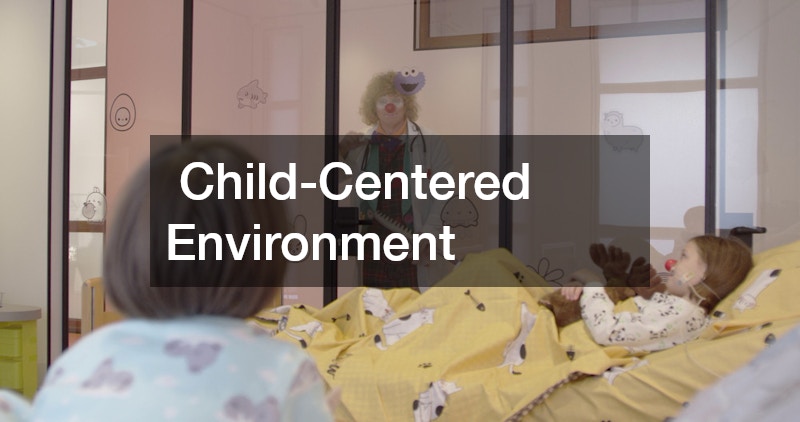Pediatric-focused urgent care provides specialized medical services that cater specifically to the distinct physiological and psychological needs of children. Children differ greatly from adults, not just in their smaller size, but also in their developmental stages, making specialized care crucial in medical situations. This article explores the importance of pediatric-focused urgent care and its unique benefits compared to general urgent care or emergency room visits.
Definition and Scope
Pediatric-focused urgent care centers are specialized facilities designed explicitly to address the medical needs of children from infancy through adolescence. Unlike general urgent care, which serves patients of all ages, pediatric urgent care focuses on treating non-life-threatening conditions such as minor fractures, injuries, infections, and illnesses specific to children. These centers bridge the gap between a child’s primary care provider and emergency room services, offering timely and focused care.
The scope of pediatric urgent care extends beyond mere treatment, encompassing education and reassurance for both the child and family. These centers are often staffed with specialists trained to communicate effectively with children, helping to reduce their anxiety during medical visits. The facilities are equipped with child-sized medical equipment and instruments that better suit the smaller, more delicate physiologies of pediatric patients, ensuring safer and more precise care.
Pediatric versus General Urgent Care
One of the primary distinctions between pediatric and general urgent care is the approach to treatment, which in pediatric settings is child-specific. While general urgent care centers are designed to handle a vast array of adult health issues, pediatric facilities focus on ailments that predominantly affect children such as croup, asthma, and other childhood illnesses. This specialization ensures that the medical team can provide appropriate treatments quickly and accurately.
Pediatric urgent care centers use equipment uniquely suited for children, such as smaller blood pressure cuffs and child-specific medication dosages. Furthermore, treatment protocols are designed with the consideration of a child’s smaller size and developing physiology, which differs significantly from adults. The medical staff is also trained to manage the emotional and psychological aspects of pediatric care, assisting children in feeling comfortable and understood.
Special Training and Expertise
Healthcare providers in pediatric urgent care centers undergo extensive training to address various medical scenarios specific to children. This involves understanding how child anatomy and physiology differ from adults, requiring distinct diagnostic and therapeutic strategies. Such specialization enables healthcare professionals to pinpoint issues more effectively and respond with appropriate medical interventions.
Beyond medical expertise, pediatric care practitioners are equipped with skills to communicate effectively with young patients, utilizing age-appropriate language and explanations. These professionals are trained to manage the higher stress and anxiety levels often present in children during medical visits. This training aids in creating a supportive atmosphere that enhances the overall care experience for the child and their guardians.
Child-Centered Environment
Pediatric urgent care centers are purposefully designed to create a warm and inviting atmosphere that eases anxiety in children. These facilities incorporate bright colors, engaging toys, and friendly staff to foster a sense of safety and comfort. The child-centered environment plays a crucial role in making children feel more at ease, which can positively influence their response to medical care.
In a pediatric-focused setting, waiting areas and treatment rooms often include child-friendly distractions such as books and games, which help to alleviate stress and pass time comfortably. This environment facilitates a more relaxed experience for the child, allowing for greater cooperation during examinations and treatments. The familiarity and friendliness of the space also help in reducing fear of future medical visits, fostering an overall positive attitude toward healthcare.
Tailored Medical Solutions
Pediatric urgent care centers provide medical solutions specifically tailored to accommodate the unique physiological and developmental needs of children. Treatments are customized to be safe and effective for children’s smaller bodies, differing metabolic rates, and developmental stages. This approach ensures that children receive optimal doses of medications and suitable medical interventions without unnecessary risks.
In tailoring medical solutions, pediatric care practitioners consider not only the immediate symptoms but also the child’s developmental history and potential future health impacts. This comprehensive approach supports immediate recovery and long-term wellness, helping to prevent the recurrence of issues. Tailoring extends to communication with the child at an appropriate level of understanding, ensuring they feel informed and reassured throughout their healthcare experience.
Continuity of Care
Pediatric urgent care centers play an integral role in maintaining continuity of care by working closely with a child’s primary care provider. This collaboration ensures that healthcare records and treatment plans are seamlessly integrated, facilitating comprehensive tracking of the child’s health progress and promoting ongoing wellness. Such coordination between care providers contributes to more personalized and consistent healthcare management.
Pediatric-focused urgent care centers provide a specialized, efficient, and welcoming solution for addressing the unique healthcare needs of children. By emphasizing a child-friendly environment, tailored medical solutions, and specialized care, these centers play a crucial role in improving pediatric health outcomes. As families seek the most effective options for non-emergency situations, pediatric urgent care offers a valuable alternative to traditional emergency room visits, ensuring timely, cost-effective, and coordinated care for young patients.

